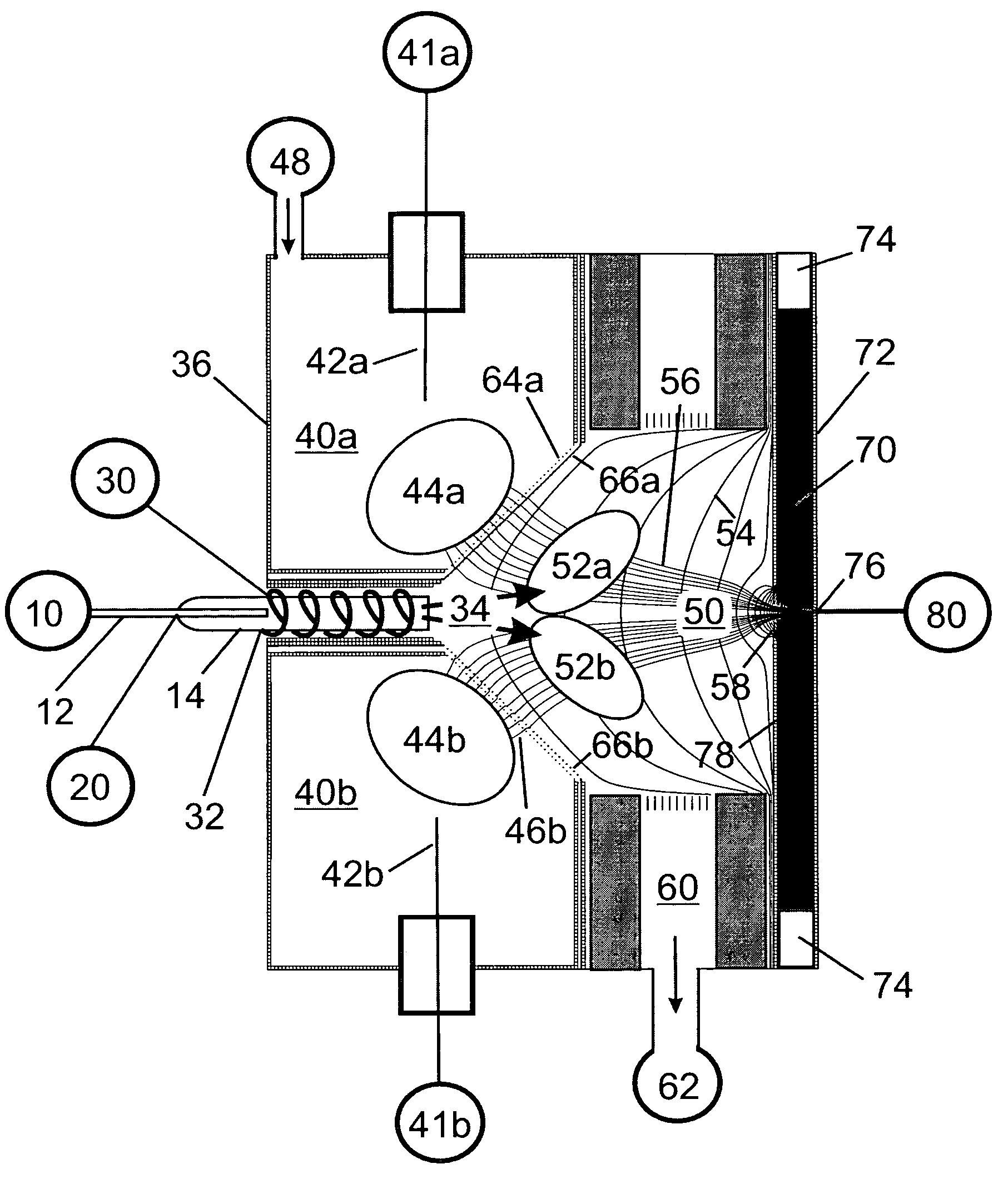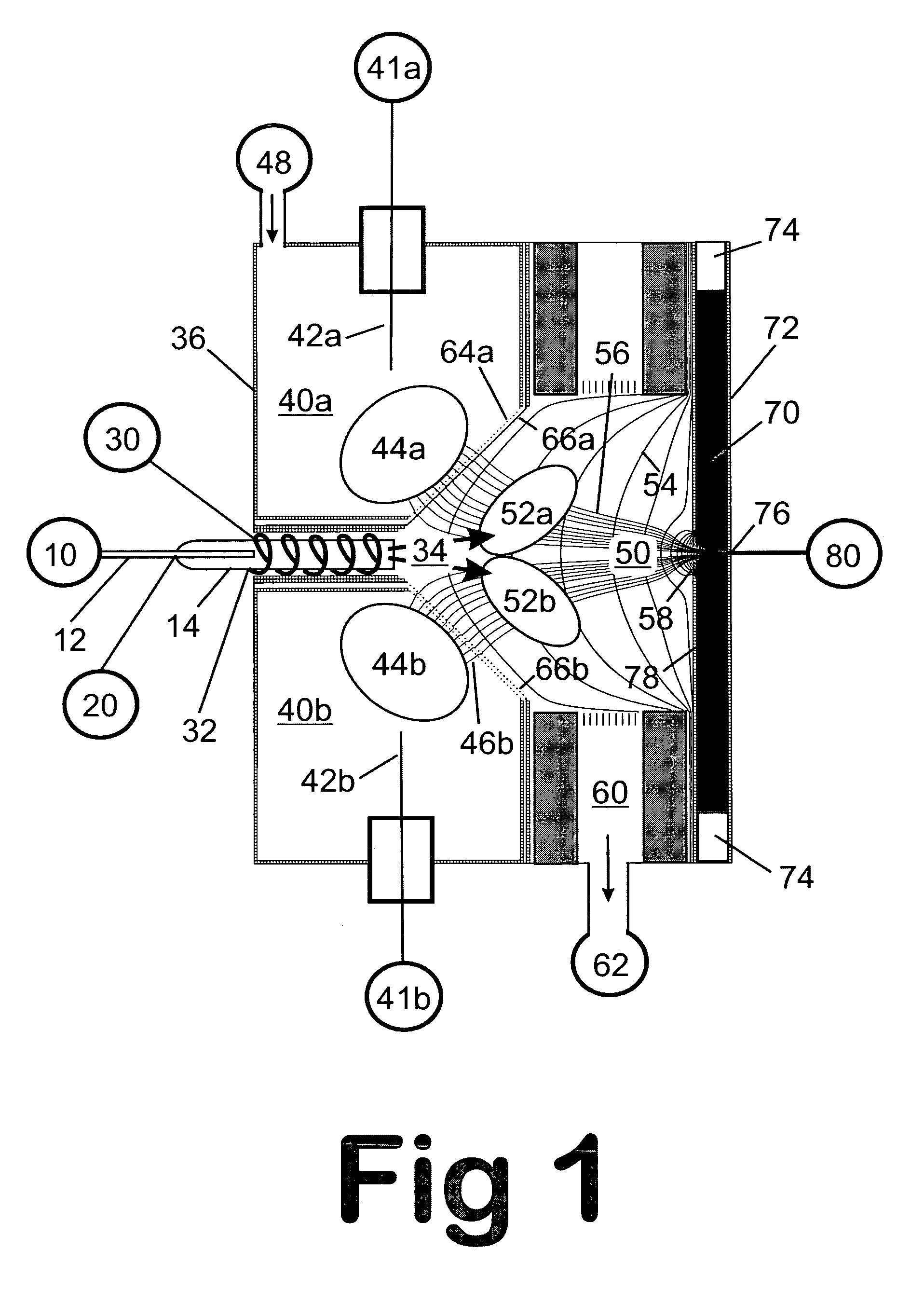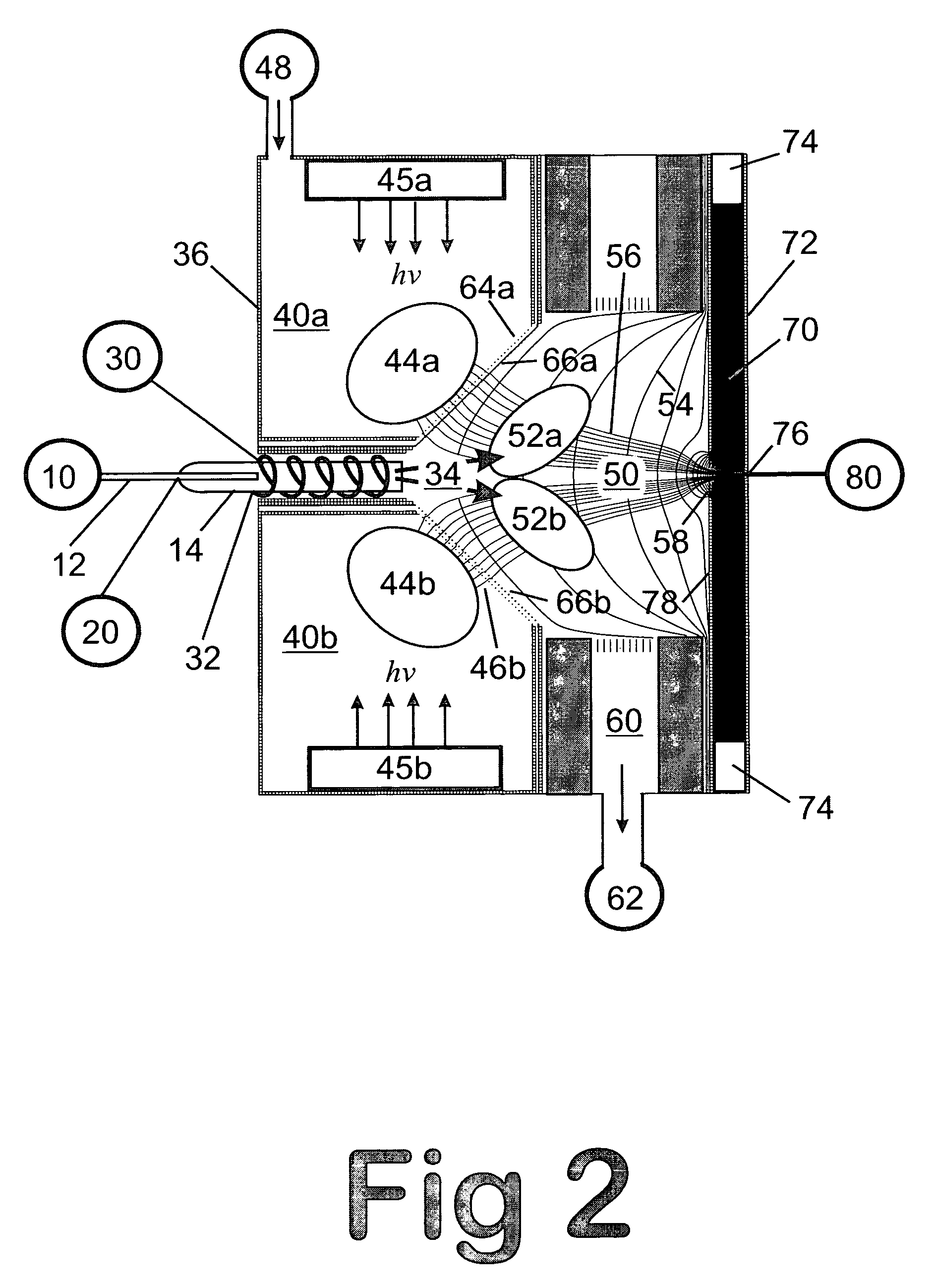Remote reagent chemical ionization source
a technology of reagents and reagents, applied in the field of remote reagent chemical ionization sources, can solve the problems of poor sampling efficiency, large general approach restrictions, and difficult to meet the requirements of mass spectrometers, so as to improve the collection efficiency of ions, improve the effect of sampling efficiency and small cross-sectional area beam
- Summary
- Abstract
- Description
- Claims
- Application Information
AI Technical Summary
Benefits of technology
Problems solved by technology
Method used
Image
Examples
Embodiment Construction
—FIG. 1 (Remote Atmospheric Pressure Chemical Ionization, Remote-APCI)
[0031]A preferred embodiment of the chemical ionization source of the present invention at atmospheric pressure is illustrated in FIG. 1. Sample from a sample source 10 is delivered to a nebulizer 14 by a sample delivery means 12 through an ion source entrance wall 36. This embodiment contains a heated nebulizer for nebulization and evaporation of sample streams emanating from liquid chromatographs and other liquid sample introduction devices. The liquid sample is heated, nebulized, and vaporized by the input of nebulization gas from a nebulization gas source 20 and by heat from heating coils 32 generated from a nebulizer heating supply 30. The nebulizer generates a sample aerosol flow 34 with the sample being vaporized into the gas-phase and proceeding into a reaction or sample ionization region 52.
[0032]Reagent ions are generated in a reagent ion generation region 40 by electron ionization from a discharge needl...
PUM
 Login to View More
Login to View More Abstract
Description
Claims
Application Information
 Login to View More
Login to View More - R&D
- Intellectual Property
- Life Sciences
- Materials
- Tech Scout
- Unparalleled Data Quality
- Higher Quality Content
- 60% Fewer Hallucinations
Browse by: Latest US Patents, China's latest patents, Technical Efficacy Thesaurus, Application Domain, Technology Topic, Popular Technical Reports.
© 2025 PatSnap. All rights reserved.Legal|Privacy policy|Modern Slavery Act Transparency Statement|Sitemap|About US| Contact US: help@patsnap.com



